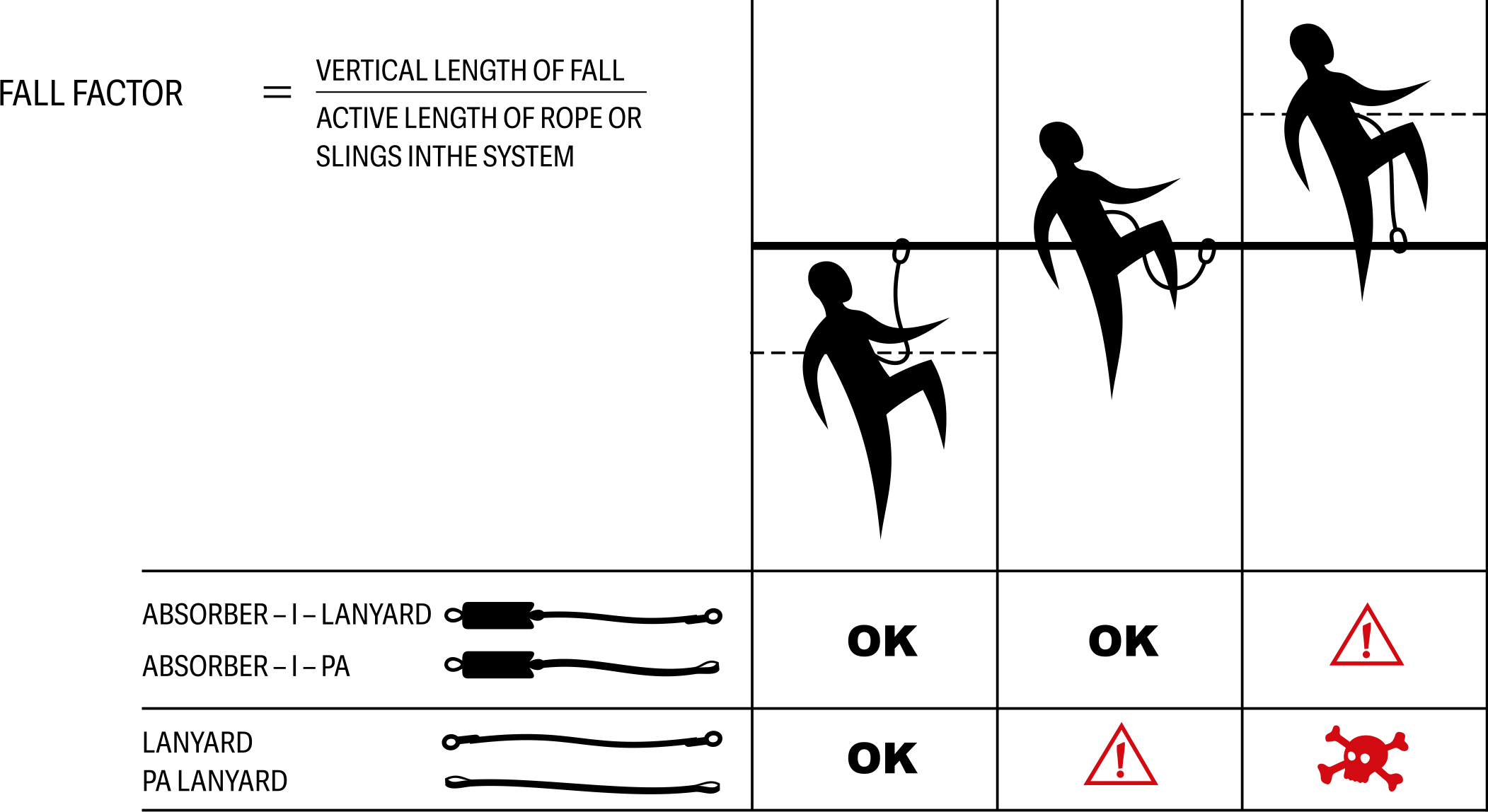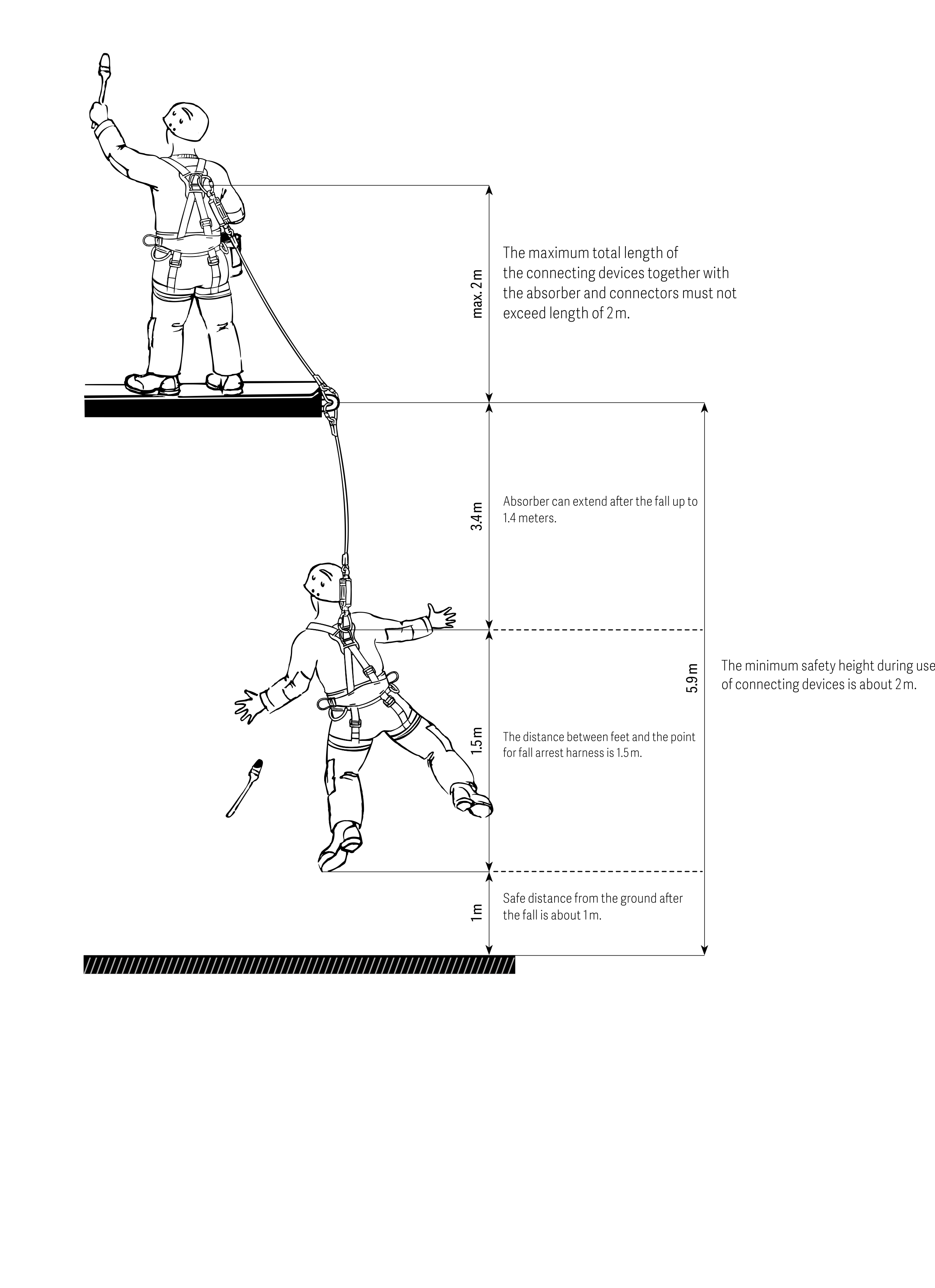Shock Absorbers and Fall Factor
FALL ABSORBERS
These devices and their additional components allow the fall arrester to work with maximum safety in normal conditions, which are defined by the EU standards: Slings EN 354, Fall Absorbers EN 355, and the fall arrest systems. Absorbing the fall energy is done by controlled destruction of the internal webbing shock absorber. This process is assured under any climatic conditions. According to the standards, the use of the fall absorbers is only possible where there is adequate clearance height,
EXAMPLES OF REQUIRED CLEARANCE HEIGHT
This is the desired distance under the user, consisting of the length of the connecting slings plus the extended length of the fall absorber. Thus, this is the necessary amount of free space required under the worker, in the event that the fall arrest is deployed, so the worker will not be hurt by hitting the ground. The total length of all the pieces must not exceed 2 m (pieces include anchor, connectors, slings, lanyards). The laws are designed to prevent wrong choices of the fastener lengths and consequent severe crashes. A two-meter fall is extremely dangerous and it is therefore appropriate to shorten the length of the fasteners as much as possible. Unfortunately, even a correct selection and deployment of slings and fall absorbers does not guarantee complete safety. The essence of clearance is the space between the anchor point and the ground or the nearest obstacle. In such calculations, it is necessary to take into account the following factors depending on the system used. A. Slings and fall absorber B. Mobile system for fall arrests C. Effect of inertia.

